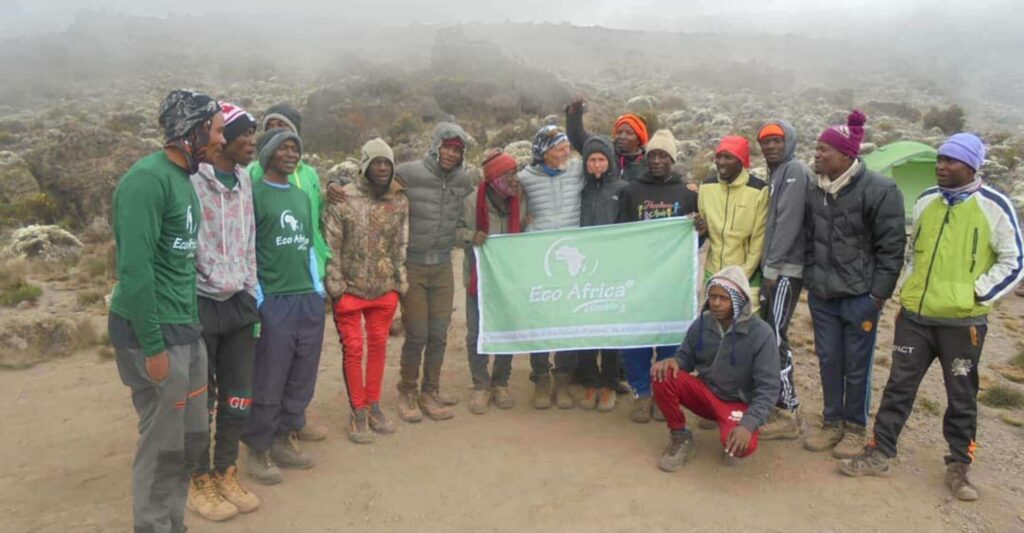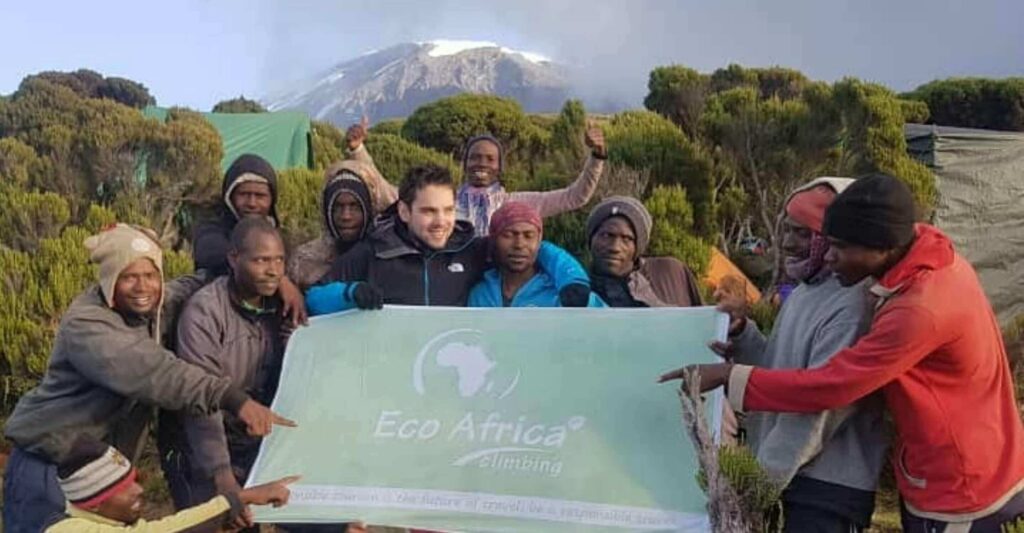KILIMANJARO TRIAL CONDITION
Climbing Mount Kilimanjaro is a once-in-a-lifetime experience that requires careful planning and preparation. One of the most important factors that can affect your climb is the condition of the trail you’ll be using. At Eco-Africa Climbing, we are committed to providing our clients with the best possible climbing experience, which is why we focus on the condition of the trails. In this article, we’ll discuss everything you need to know about the condition of the Kilimanjaro trails, and how it can impact your climb.
About Eco-Africa Climbing
Eco-Africa Climbing is a local tour operator based in Moshi, Tanzania, that specializes in Kilimanjaro climbs, safaris, and cultural tours. As an ethical tour operator, we are committed to providing our clients with a safe, ethical, and sustainable travel experience. We work with local communities to promote responsible tourism and environmental conservation, and we take pride in offering personalized service to ensure our clients have the best possible experience.
Kilimanjaro Trail Conditions
The condition of the trail is one of the most important factors to consider when planning your Kilimanjaro climb. Kilimanjaro has six official climbing routes, each with its own unique features and challenges. Here’s what you need to know about the condition of the trails on each route:
Marangu Route
The Marangu Route is the most popular and easiest route up Kilimanjaro. The trail is generally well-maintained and is wide enough for two people to walk side by side. However, the trail can be muddy and slippery, especially during the rainy season. Additionally, the Marangu Route is the only route that uses huts for accommodation, which can be crowded during peak season.
Machame Route
The Machame Route is known for its scenic beauty and is one of the most popular routes. The trail is generally well-maintained, but it can be steep and rocky in some sections, making it challenging for some climbers. The trail can also be muddy and slippery during the rainy season.
Lemosho Route
The Lemosho Route is one of the most scenic and least crowded routes up Kilimanjaro. The trail is generally well-maintained, but it can be steep and rocky in some sections. The trail can also be muddy and slippery during the rainy season.
Rongai Route
The Rongai Route is the only route that starts on the north side of Kilimanjaro. The trail is generally well-maintained, but it can be steep and rocky in some sections. The trail can also be muddy and slippery during the rainy season.
Umbwe Route
The Umbwe Route is one of the shortest and steepest routes up Kilimanjaro. The trail is not well-maintained, and it can be steep, rocky, and slippery in some sections. The Umbwe Route is not recommended for inexperienced climbers.
Northern Circuit Route
The Northern Circuit Route is the newest route up Kilimanjaro, and it’s known for its scenic beauty and low traffic. The trail is generally well-maintained, but it can be steep and rocky in some sections. The trail can also be muddy and slippery during the rainy season.
What to Expect on Kilimanjaro Trails
The trails on Kilimanjaro can be challenging and varied depending on the route and weather conditions. Here are some things you can expect:
Steep and Rocky Terrain:
Many of the Kilimanjaro trails are steep and rocky, with uneven surfaces and loose rocks. This can make it challenging to maintain your footing and requires careful attention and focus.
Muddy and Slippery Trails:
During the rainy season, the trails on Kilimanjaro can become muddy and slippery, making it even more challenging to maintain your footing. It’s important to wear appropriate footwear and be prepared for the wet conditions.
High Altitude:
Kilimanjaro is a high-altitude mountain, and the higher you climb, the lower the oxygen levels become. This can cause altitude sickness, which can include symptoms such as headaches, nausea, and dizziness. It’s important to acclimatize properly and follow your guide’s advice.
Cold Temperatures:
As you climb higher on Kilimanjaro, the temperatures can drop significantly. It’s important to bring warm clothing and layers to stay warm, especially at night.
How to Prepare for Kilimanjaro Trail Conditions
Preparing for the trail conditions on Kilimanjaro is crucial to a successful climb. Here’s what you need to do:
Train for the Climb:
Climbing Kilimanjaro requires physical fitness and endurance. It’s important to train beforehand by doing cardio exercises, such as running or hiking, and strength training, such as weightlifting or yoga.
Wear Appropriate Footwear:
Wearing the right footwear is crucial for a successful Kilimanjaro climb. Make sure to bring sturdy, waterproof hiking boots with good traction to handle the steep and rocky terrain.
Bring Appropriate Clothing:
The weather on Kilimanjaro can be unpredictable, so it’s important to bring warm, waterproof clothing and layers. Make sure to bring a warm jacket, rain gear, and moisture-wicking clothing to stay dry.
Acclimatize Properly:
To avoid altitude sickness, it’s important to acclimatize properly by spending time at higher altitudes before climbing to the summit. Our itineraries are designed to allow for proper acclimatization.
Follow Your Guide’s Advice:
Our guides are experienced and knowledgeable about the Kilimanjaro trails and the weather conditions. It’s important to listen to their advice and follow their instructions to ensure a safe and successful climb.
The trail conditions on Kilimanjaro can be challenging, but with the right preparation and guidance, you can have a successful climb. At Eco-Africa Climbing, we are committed to providing our clients with a safe and ethical Kilimanjaro climbing experience. We work closely with our clients to prepare them for the trail conditions and provide experienced guides to ensure a safe and successful climb. Contact us today to start planning your Kilimanjaro climb.
Our Top Recommended Ethical Kilimanjaro Climbs
Ethical Kilimanjaro via Northern Circuit Route 9 Days
The Northern Circuit route is one of the best routes on Kilimanjaro.The route approaches Mount Kilimanjaro from the west….
From USD $3250
Ethical Kilimanjaro via Lemosho Route 8 Days
The Lemosho route is one of the newer routes on the mountain and a superb choice for your climb, It is our preferred route…
From USD $2950
Ethical Kilimanjaro via Machame Route 7 Days
Machame (“Whiskey”) Route is also known as the “Whiskey” route, the Machame route is now the most popular route on the …
From USD $2650


